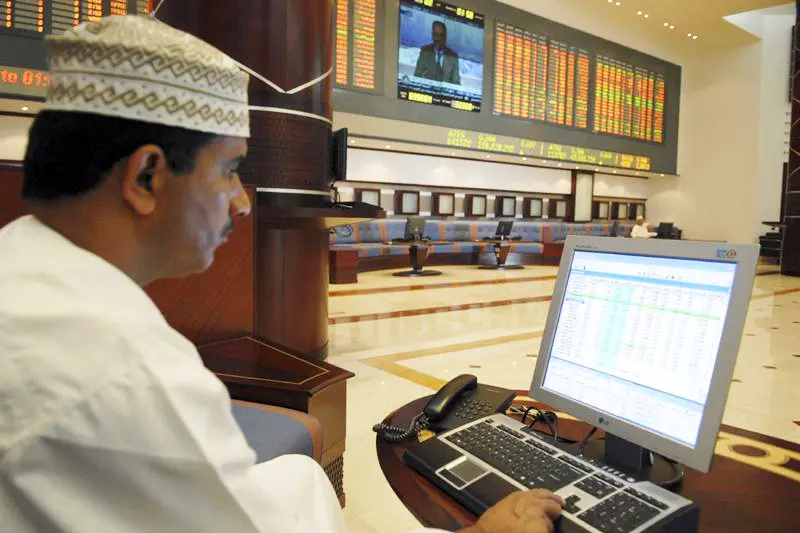PHOTO
* Major commercial bank lifts loan, deposit rates
* Cites more expensive cost of funding
* A U.S. hike could boost Omani rates further
* Central bank's repo rate has started edging up
* Bankers say moves in Iranian funds could have impact
By Fatma Alarimi
MUSCAT, Dec 7 (Reuters) - Oman's central bank hopes local lenders will not raise loan and deposit rates because of tightening liquidity arising from low oil prices, but rises may be inevitable depending on the trend in U.S. rates, a top central bank official said on Wednesday.
One major commercial bank, Bank Sohar
"Unfortunately, market conditions have now changed and the cost of funding has significantly increased," Bank Sohar said in a note to clients. "As a result, it has become extremely challenging to hold interest rates at current levels."
Central bank executive president Hamood Sangour al-Zadjali told Reuters that Bank Sohar's hike followed a previous lowering of rates by that bank, so the hike was within allowable limits. A 6 percent cap on rates for loans to individuals is still in place, he added.
"The increase was 0.5 percentage point, and we will try not to see it happening with other banks," Zadjali said.
However, he noted that there had been upward pressure on Omani banks' loan and deposit rates since oil prices began dropping about two years ago, because a decline in government deposits had pressured liquidity in the banking system.
In addition, the U.S. Federal Reserve is widely expected to raise rates when it meets next week.
"Depending on changes in the Federal Reserve rates, (Omani rates) might increase more," Zadjali said.
There is also talk among Omani banks that Iranian institutions could withdraw funds to repatriate them after the lifting of economic sanctions on Tehran in January. Asked about this, Zadjali said the movement of Iranian deposits could have an impact on liquidity in Oman, but he did not elaborate.
After the U.S. Federal Reserve last raised interest rates in December 2015, Oman's central bank kept its own official rates flat, even though several other Gulf central banks hiked their own rates in response.
However, economists believe Oman could not resist an uptrend in U.S. rates indefinitely because of the peg of its rial currency
The central bank's quarterly bulletin for September showed it had raised its official repo rate, which it uses to lend money to banks, marginally to 1.025 percent from 1.000 percent previously.
The central bank did not issue a public statement on the repo rate change but Zadjali said the increase was based on a rise in the London interbank offered rate.
"The Libor rate was below or at 1 percent for many years, and since it has gone higher than that, the repo rate also increased as our repo formula is based on Libor."
(Writing by Andrew Torchia; editing by Mark Heinrich) ((andrew.torchia@thomsonreuters.com; +9715 6681 7277; Reuters Messaging: andrew.torchia.thomsonreuters.com@reuters.net))
* Cites more expensive cost of funding
* A U.S. hike could boost Omani rates further
* Central bank's repo rate has started edging up
* Bankers say moves in Iranian funds could have impact
By Fatma Alarimi
MUSCAT, Dec 7 (Reuters) - Oman's central bank hopes local lenders will not raise loan and deposit rates because of tightening liquidity arising from low oil prices, but rises may be inevitable depending on the trend in U.S. rates, a top central bank official said on Wednesday.
One major commercial bank, Bank Sohar
"Unfortunately, market conditions have now changed and the cost of funding has significantly increased," Bank Sohar said in a note to clients. "As a result, it has become extremely challenging to hold interest rates at current levels."
Central bank executive president Hamood Sangour al-Zadjali told Reuters that Bank Sohar's hike followed a previous lowering of rates by that bank, so the hike was within allowable limits. A 6 percent cap on rates for loans to individuals is still in place, he added.
"The increase was 0.5 percentage point, and we will try not to see it happening with other banks," Zadjali said.
However, he noted that there had been upward pressure on Omani banks' loan and deposit rates since oil prices began dropping about two years ago, because a decline in government deposits had pressured liquidity in the banking system.
In addition, the U.S. Federal Reserve is widely expected to raise rates when it meets next week.
"Depending on changes in the Federal Reserve rates, (Omani rates) might increase more," Zadjali said.
There is also talk among Omani banks that Iranian institutions could withdraw funds to repatriate them after the lifting of economic sanctions on Tehran in January. Asked about this, Zadjali said the movement of Iranian deposits could have an impact on liquidity in Oman, but he did not elaborate.
After the U.S. Federal Reserve last raised interest rates in December 2015, Oman's central bank kept its own official rates flat, even though several other Gulf central banks hiked their own rates in response.
However, economists believe Oman could not resist an uptrend in U.S. rates indefinitely because of the peg of its rial currency
The central bank's quarterly bulletin for September showed it had raised its official repo rate, which it uses to lend money to banks, marginally to 1.025 percent from 1.000 percent previously.
The central bank did not issue a public statement on the repo rate change but Zadjali said the increase was based on a rise in the London interbank offered rate.
"The Libor rate was below or at 1 percent for many years, and since it has gone higher than that, the repo rate also increased as our repo formula is based on Libor."
(Writing by Andrew Torchia; editing by Mark Heinrich) ((andrew.torchia@thomsonreuters.com; +9715 6681 7277; Reuters Messaging: andrew.torchia.thomsonreuters.com@reuters.net))












